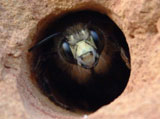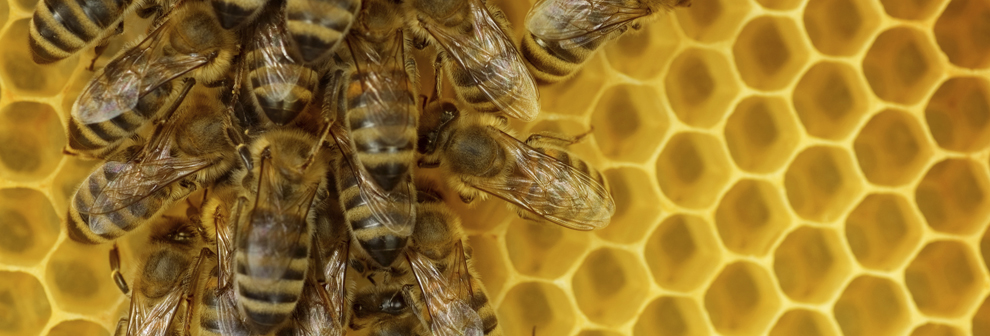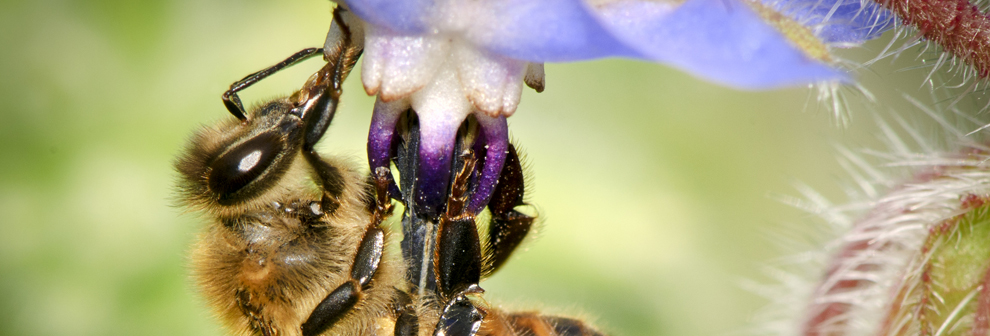Identification of Carpenter Bees
For Carpenter Bee Control and Carpenter Bee Removal it is important to identify these species. The most common carpenter bee in greater Atlanta, Xylocopa virginica, is distributed throughout the eastern half of North America. In the late-spring and early summer, Georgia homeowners often notice large, black bees hovering around the outside of their homes. These are probably carpenter bees, searching for mates and sites to construct their nests.

Male carpenter bees are quite aggressive, often hovering in front of people who are near the nest. These males are harmless and they have no stingers. Since these bees are not social, there are no workers to protect the nest. Stings from females are painful, but rare.
Damage They Cause
Carpenter bees will bore into wood and make a long tunnel for egg laying. They prefer to attack unpainted wood and commonly tunnel in eaves, window trim, fascia boards, siding, wooden shakes and decks. They will also go into painted wood especially if any type of start hole is present.
New females reuse old tunnels year after year; they are also attracted to areas where other females are tunneling. Egg laying and tunneling occurs in the spring. Males hover around the tunnel entrance while the female tends the nest and lays eggs.
This tunneling can destroy the wood and help the onset of wood rot and water damage. Another problem with carpenter bees living in your home is the attraction of woodpeckers. Woodpeckers will feed on carpenter bees and their eggs, but in order for the woodpecker to feed on the bees and eggs they must peck out the wood to gain access to them.
Carpenter Bee Removal and Bee Control
Dusting an insecticide into the tunnel opening is the best treatment for nests which have already been excavated. The hole should be left open for a few days after treatment to allow the bees to make contact with and distribute the insecticide throughout the nest gallery.
After proper treatment the entrance hole should be plugged with a piece of wooden dowel, caulk, carpenter’s glue, or wood putty. This will protect against future utilization of the old nesting tunnels and reduce the chances of wood decay and/or wood rot.
Unfortunatley, there is no way to prevent or deter carpenter bees long term. A reactive approach is required to keep carpenter bees from causing more damage to your structure. The best method is to treat the wood in the Spring with a residual pesticide. Urban Wildlife Control can provide these services as part of our quarterly pest control program. Also any new holes must be treated and filled as they appear.


